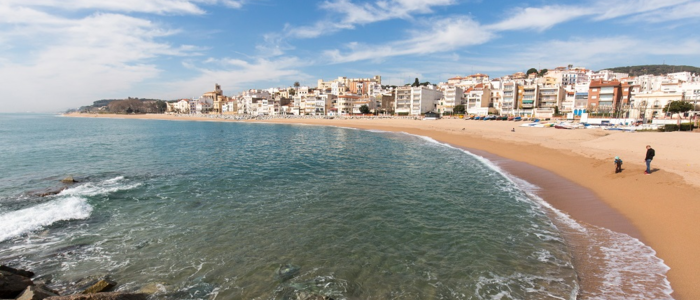
Blog
Modernism, a cultural and architectural legacy linked to the Maresme

Between the end of the 19th century and the beginning of the 20th century, a cultural movement spread across Europe that was characterised by details, plant motifs, asymmetry and a dynamism of forms. Modernism was a movement that had an impact on all manifestations of art and in the Maresme it was expressed particularly in its architecture, favoured by bourgeois families who wanted to display their purchasing power in their residences.
So thanks to the architects born in or with connections to the Maresme, Josep Puig i Cadafalch, Lluís Domènech i Montaner, Ferrés i Puig, Cabanyes and Mas i Morell, the Maresme became a small modernist paradise, where there are near to 300 items linked to this cultural movement. Factories, schools, towers, pantheons, chapels, athenaeums, town halls, sets of streets, houses... a whole heritage to discover.
Some municipalities in the region have established tourist routes based on Modernism, such as Canet de Mar, Mataró, Argentona, El Masnou and Sant Andreu de Llavaneres. But other towns, such as Alella, Arenys de Mar, Arenys de Munt, Caldes d'Estrac, Calella, Malgrat de Mar, Premià de Mar, Premià de Dalt, Sant Pol de Mar, Teià, Tiana, Vilassar de Dalt and Vilassar de Mar also have modernist features. They can all be found in the Costa del Maresme Tourist Promotion Consortium guide.
Canet de Mar can be considered as the birthplace of Modernism. This is where the architect Lluís Domènech i Montaner had his studio and the family home, and he experimented with the materials and models that he would later transfer to some of his most important buildings, such as the Hospital de Sant Pau and the Palau de la Música in Barcelona In the coastal town there is the Lluís Domènech i Montaner House Museum, an emblematic heritage of the municipality, as well as other houses, the Ateneu Canetenc, the old municipal slaughterhouse or the Castle of Santa Florentina.
Such is its importance that every year, precisely in September, the town returns to the 19th and 20th centuries to revive the Modernist Fair , where period characters walk the streets and relive centuries-old stories, but also retrace the architectural heritage, gastronomy, crafts and customs of the time.
The fair is held from September 16 to 18.
In Mataró there is the Nau Gaud and the birth place of Modernism as it was the first work of the renowned architect Antoni Gaudí, who became the modernist symbol of Catalonia. This is where he experimented with parabolic arches as structural elements. But there are also other spaces with the modernist brand, such as the Saló de Sessions of the City Hall, the shop "La Confianza", the Casa Coll i Regàs or the old charity house "La Beneficiència", all of them designed by Josep Puig i Cadafalch, who was the municipal architect of the capital of Maresme, his hometown.
Argentona is another municipality that has taken care of its modernist heritage, which has great examples such as Casa Puig i Cadafalch or Casa Garí, where Puig i Cadafalch spent his summers, as well as the Torre d'Aigües del Cros. For its part, Alella hides modernist gems in spaces such as a cellar: that of Alella Vinícola, designed by Jeroni Martorell, but also the 19th century Fábrica de pintures and the Torre del Governador. And in El Masnou, architects such as Bonaventura Bassegoda i Amigó, Gaietà Buïgas and Domènec Boada also left a legacy that is still proudly on display today.
The towns and cities most intrinsically linked to Modernism organise routes that specialise in the emblems of the movement, a great opportunity to discover how this movement influenced the Maresme, especially culturally.

